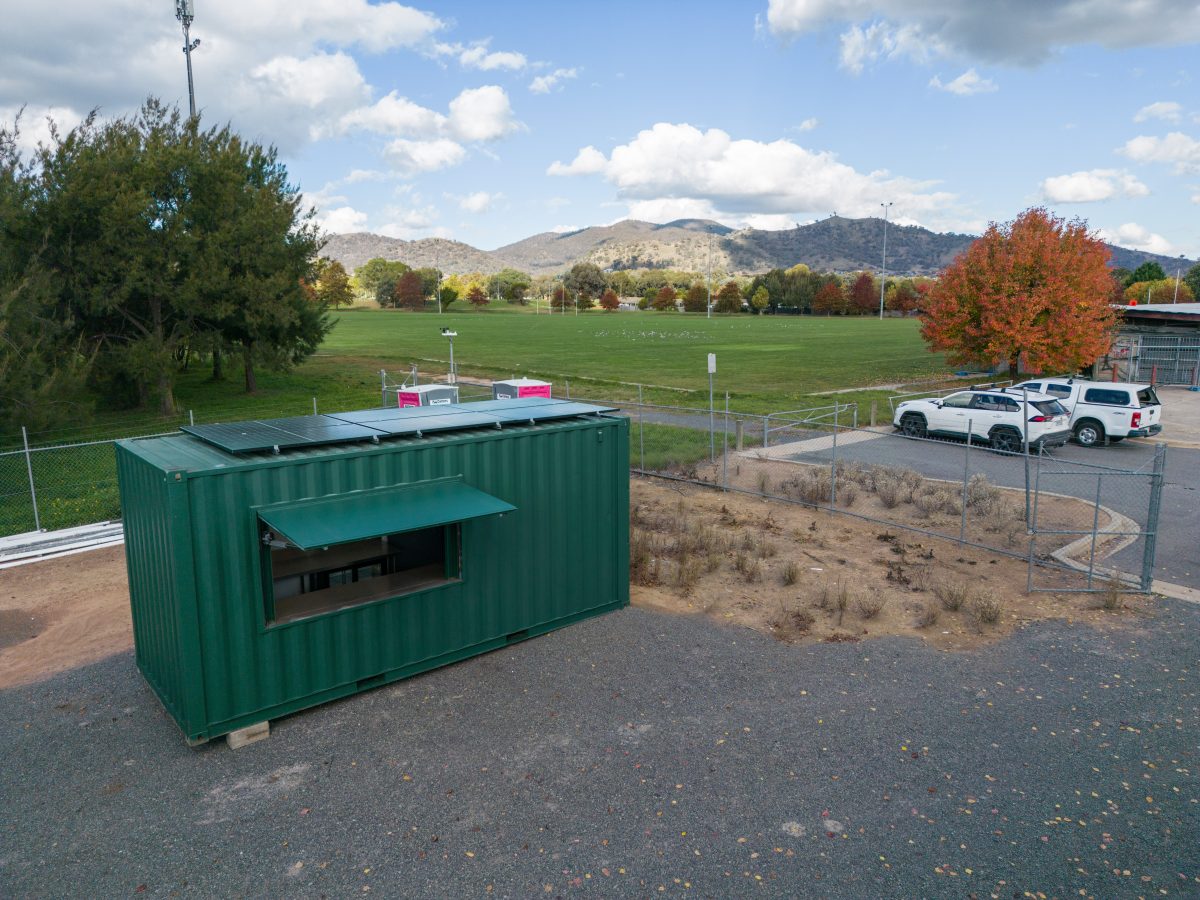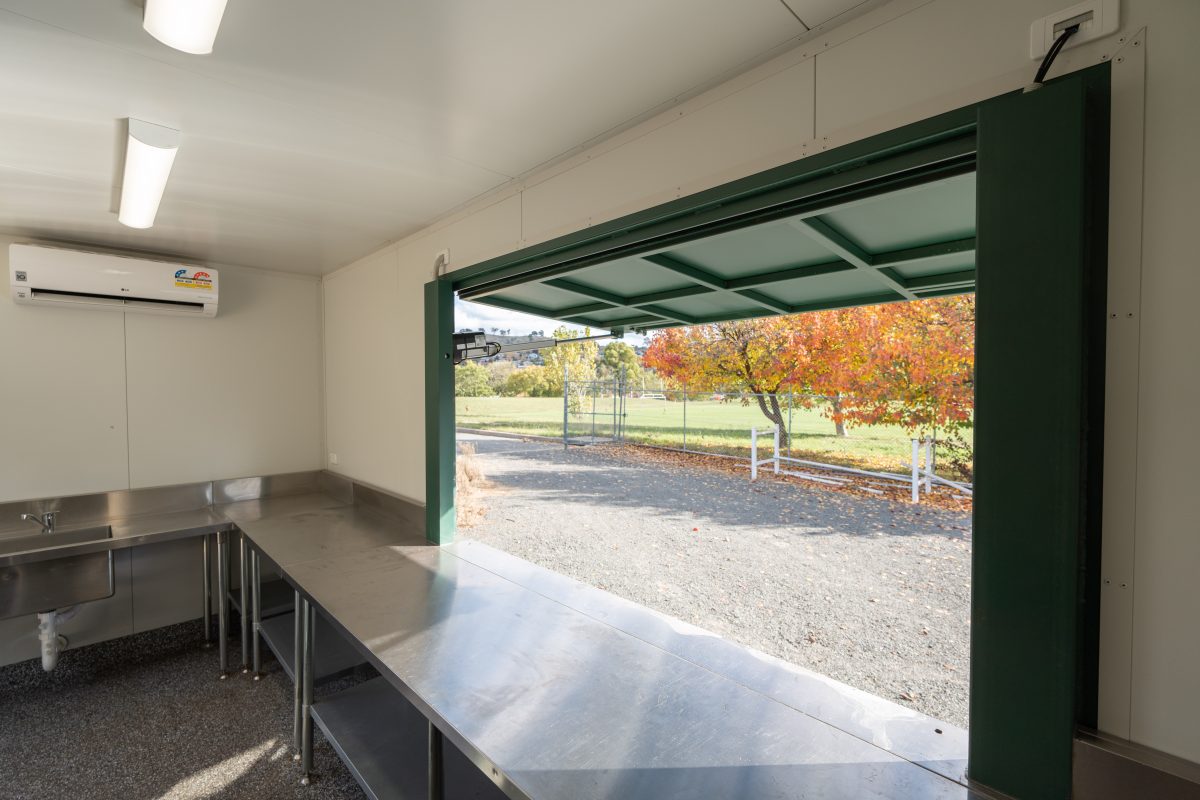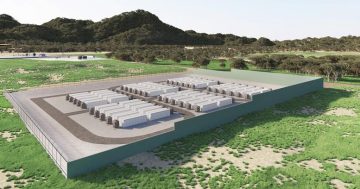
The new shipping container canteen features an internal kitchen, air conditioning unit and lighting, which can be powered for up to 12 hours by rooftop solar panels. Photo: ACT Government.
A new solar-powered canteen inside the frame of a converted shipping container at the Gordon district playing fields has been months in the making.
The ACT Government-funded project was unveiled in April as a temporary answer to the fields’ severely fire and vandalism-damaged pavilion.
The company behind the container’s design, Canberra Containers, retrofits shipping containers with electrical, plumbing, insulation and flooring.
Aside from the basics, they can add doors, windows and shutters, kitchens, bathrooms, air-conditioning, cladding and workshops.
“The sky’s the limit. It’s limited to your imagination and your wallet,” Canberra Containers director Nige Pearman said.
The ACT Government’s design was a version of the established ‘severies’ style, which includes a kitchen and front shutter.
“They were produced in a way that they didn’t require a connection to power, water or sewer,” Mr Pearman explained.
“So they have the ability to position them in areas that otherwise would have been unachievable without major service works.”

The interior of the shipping container has been transformed into a working canteen kitchen, with sports players served through an automated shutter window. Photo: ACT Government.
The company has completed similar designs for BentSpoke Brewing Co. in the past, but Mr Pearman said the ACT Government’s containers were more advanced.
“These are actually the first ones that we produced that have automated electric openings … so you can literally walk in there, press a button and the shutter comes up,” he said.
He said feedback so far had been positive, with people reporting preferring to work out of the converted containers over the existing buildings, which Mr Pearman said were showing their age.
Two more change room designs by Canberra Containers featuring storage with racks for bags, seating and lighting have also been deployed this year at Hall Sportsground and in Gordon.
Canberra Containers’ original canteen design was powered by an internally fitted diesel generator; however, the government said they heard concerns over its noise level and pollution.
Hive Electrical, a Canberra-based solar and battery storage installation company, was contracted by the ACT Government to retrofit the container with a renewable solution.
The company installed six solar panels and two batteries to provide the power required to operate an air conditioning unit, fridge and lighting for up to 12 hours.
Hive Electrical managing director Abel Davaris said it was the first time his electrical company had been asked to install the equipment on a shipping container.
“The major difference between grid-connect solar and off-grid solar is the battery and the ability to store the power and use it at a later date,” he said.
“Typically, we were doing off-grid in remote locations where grid power isn’t readily accessible, so this is a little bit different for us.
“The big advantage is it can be transportable without hooking it up to mains power.”
Minister for Sport and Recreation Yvette Berry said the containers were an exciting new solution for providing temporary and portable facilities to sporting grounds.
“To help more sporting groups, the ACT Government is continuing to invest in similar solar-powered shipping containers to be placed at other grounds where required,” she said.
“It is another example of how shipping containers these days can be so much more than just storage facilities and allow us to temporarily place them at grounds anywhere the sun shines.”


















